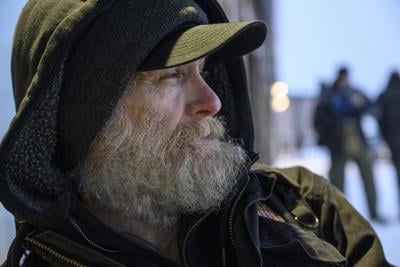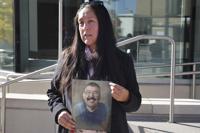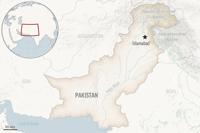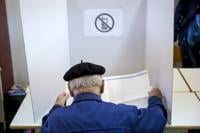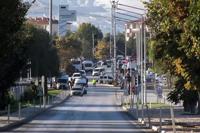ANCHORAGE, Alaska (AP) — The case of a homeless man who froze to death in Alaska’s second-largest city of Fairbanks has exposed a hole in the safety net of care provided to a vulnerable population in one of the coldest places in the country.
The city has no low-barrier shelter to provide help and a warm place to stay on an unconditional basis.
The body of Charles Ahkiviana, 55, was discovered frozen in a snowbank near a busy department store, the .
The day his body was found, two days before Christmas, it was minus 32 degrees Fahrenheit (minus 35 degrees Celsius) and at one point, the wind chill was minus 54 degrees Fahrenheit (minus 47 Celsius). Ahkiviana died of hypothermia, Alaska State Troopers said.
Among U.S. cities with 25,000 or more people, Fairbanks — with a population of about 32,500 — is the coldest in the nation, said Rick Thoman, a climate expert at the International Arctic Research Center.
Ahkiviana’s death was a moment for community reflection, and for “fury and shame,” Jennifer Jolis, the former director of a soup kitchen, wrote in the Fairbanks Daily News-Miner.
It’s estimated there are up to 100 people who are homeless in Fairbanks, where activists say a caring, creative community helps those in need.
However, the city lacks a low-barrier emergency shelter, a place that consistently and unconditionally offers an open door and a warm cot. That leaves those who are homeless to walk the streets at night, crowd into motel rooms 10 at a time and sleep in abandoned houses, cars or even dig snow caves.
The Fairbanks Rescue Mission is the largest provider of emergency shelter in Fairbanks. It can house up to 200 people in an emergency, and about 90 people, including women and families with children, were there on a recent night, said John Coghill, a former state lawmaker who runs the day-to-day operations at the mission.
However, the mission requires that a person pass a breathalyzer test and submit to a urinalysis for drugs to enter, leaving some to say it’s not sheltering the people who need help the most.
The mission’s clients are expected to move through a structured program toward self-sufficiency.
“If you’re willing to help yourself, we’re willing to help you,” said Pete Kelly, the executive director and another former state lawmaker.
The rules are necessary because the shelter needs to be an orderly, secure place, especially for people newly in recovery.
The mission can’t help everyone, Kelly and Coghill said.
“We have been criticized because there’s a level of mental illness that we just can’t take care of,” Kelly said.
Advocates say the mission does important work, but it shouldn’t be the only option and a low-barrier shelter is needed. In Anchorage, the city-owned Sullivan Arena has been turned into such a facility.
“I really wish that we had something like that here,” said Lynda Purvis, a case manager with the Tanana Chiefs Conference, a consortium of 42 Athabascan tribes in Interior Alaska that among its responsibilities is providing health and social service needs for tribal members. “Somewhere you could throw cots down, give you something warm to drink and just get out of the cold.”
About 100 people showed up for apricot oatmeal one recent morning at the Stone Soup Café, a grassroots soup kitchen in Fairbanks. Besides oatmeal, lentil stew and pork chops were available for carry out.
The philosophy of The Bread Line, which operates Stone Soup Cafe, is to offer a come-as-you-are place, with minimal rules. It also offers a place to be indoors for the two hours every morning it’s open.
Ahkiviana’s death may have momentarily raised community consciousness about the lack of shelter, but Matt Davis, a longtime cook at the Stone Soup Café, wondered if it would last long enough for action.
He said concerns with the adequacy of shelter are brought to local governments. “And every time we do, it’s, ‘Well, we have a rescue mission,’” he said.
Kenneth Cooper said he’s no longer welcome at the mission and at times will stay with friends. He doesn’t like to stay more than a night at a time, however.
During the coldest weather, he will sometimes make a shelter by burrowing into a snowbank, just big enough for himself. He runs a PVC pipe through the snow to create a vent and burns a candle for heat. Other times, he will nurse a cup of coffee at the city’s only diner open all night.
Brynn Butler, the city’s housing director who was once homeless herself, senses there’s momentum for change. She doesn’t see Fairbanks opening a low-barrier shelter like Anchorage but said they could develop a cold-weather plan that might allow it to activate emergency shelters in extreme weather.
If a funding source could be secured, a site located and workers hired, she says it could become a reality, maybe by next winter.
“That’s my hope,” she said.

